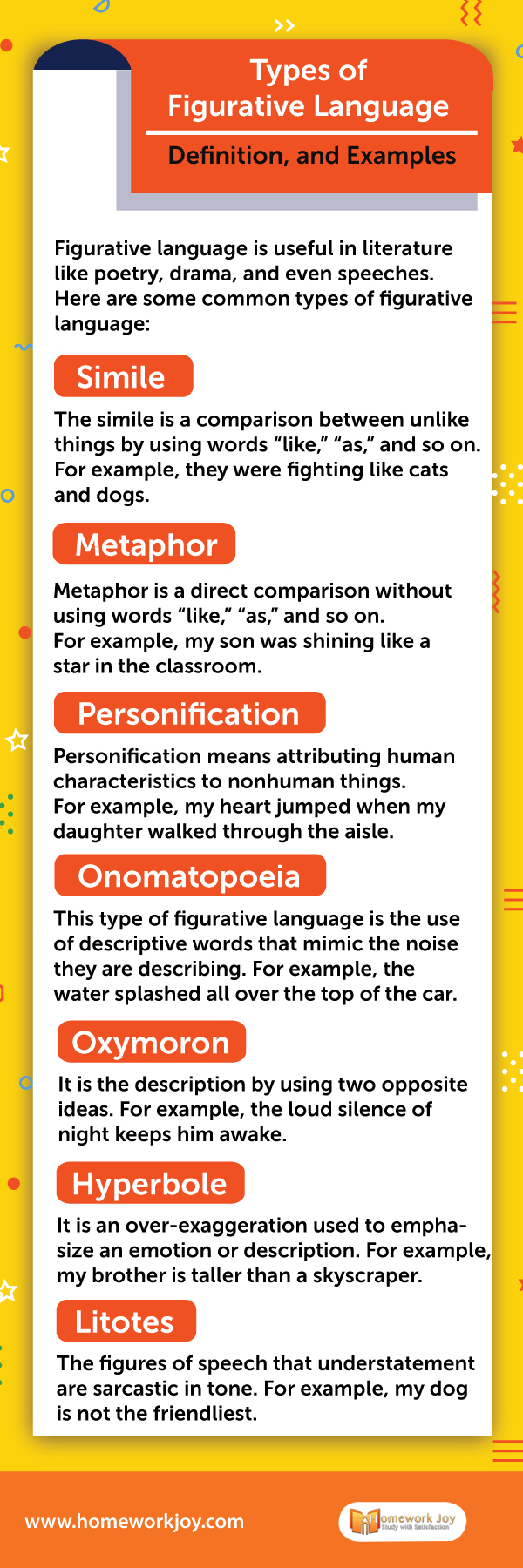Do you know? Figurative language serves as a powerful communication tool. It helps us convey complex descriptions or emotions effectively and quickly. Also, it refers to figures of speech. If you want to convey the intended meaning in the article, you must use this language in your works. So let’s review some common types of figurative language and evaluate some examples to deepen your understanding.
Also, read the latest posts:
Action Speaks Louder Than Words | Essay Tips With Examples
What is a Figurative Language?
Figurative language is useful in literature like poetry, drama, and even speeches. It involves descriptive phrases and sentences to convey a message and means something other than what is said. As it is creative wording used to build imagery to deepen the audience’s understanding, figurative language provides power to words.
Different types of figurative language are useful for different purposes that are:
- Compare two online ideas to increase understanding of one.
- Describe ideas sometimes that are difficult to understand
- Influence the audience
- Make thoughts easier to visualize
Common Types of Figurative Languages
The following are some common types of figurative language that you must know:
Simile
The simile is a comparison between unlike things by using words “like,” “as,” and so on. For example, they were fighting like cats and dogs.
Metaphor
Metaphor is a direct comparison without using words “like,” “as,” and so on. For example, my son was shining like a star in the classroom.
Personification
Personification means attributing human characteristics to non-human things. For example, my heart jumped when my daughter walks through the isle.
Onomatopoeia
This type of figurative language is the use of descriptive words that mimic the noise they are describing. For example, the water splashed all over the top of the car.
Oxymoron
It is the description by using two contradictory ideas. For example, the loud silence of night keeps him awake.
Hyperbole
It is an over-exaggeration used to emphasize an emotion or description. For example, my brother is taller than a skyscraper.
Litotes
The figures of speech that understatement sarcastic in tone. For example, my dog is not the friendliest.
Idiom
An idiom is a useful expression that acquires a meaning different from its literal meaning. Idiomatic phrases vary by language and culture. For example, you must play your cards right at the game of life.
Alliteration
Alliterations are types of figurative language that emphasize an emotion or reveal a stronger description. For example, the babble of babies brings joy to my ears.
Allusion
The allusion is usually a reference to a person, place, thing, or historical events. For example, she was Helen Tro of the class and made all boys fight.
So these were some common types of figurative language that you must add in your writings to make it sound good. If you need more English assignment help, contact us anytime. Our professionals are 24*7 available to assist you.
